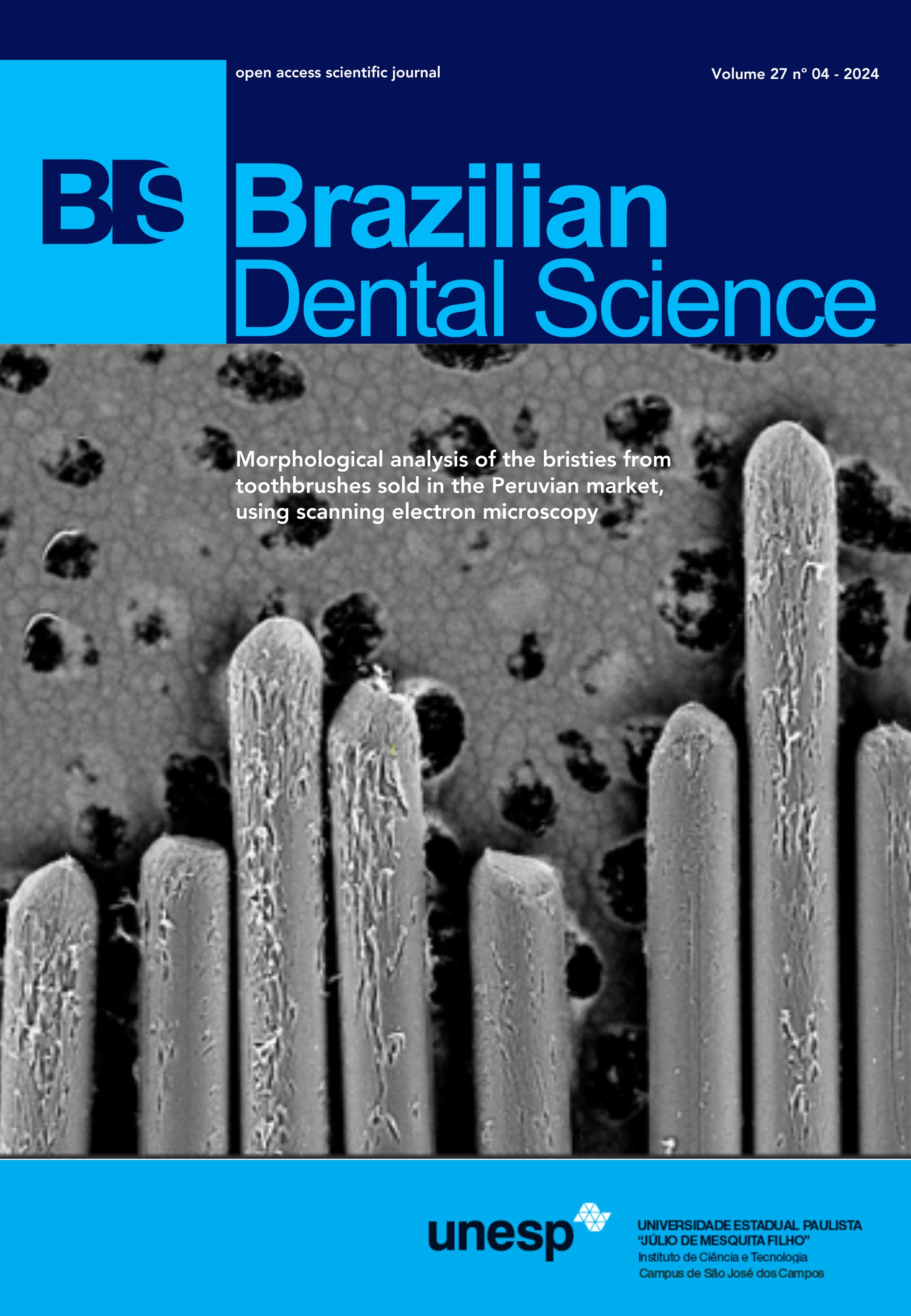Biocompatibility and bioactive potential of new bioceramic sealers in rat bone tissue: histological analysis
DOI:
https://doi.org/10.4322/bds.2024.e4511Abstract
Objective: Sealer Plus BC and Bio-C Sealer are new silicate-based sealers. We aimed to evaluate the biocompatibility and bioactivity of these silicate-based endodontic sealers compared to that of AH Plus epoxy resin sealer. Material and Methods: Fifteen rats underwent a surgical procedure to create a cavity in the tibial bone, where the sealer was inserted according to the group. The animals were euthanized after postoperative period of 15 days. Histological analysis was made, and the results were scored according to the signs of repair, quality of the bone tissue, and presence of inflammation. ANOVA Kruskal-Wallis and Mann-Whitney tests (p <0.05) were performed. Results: Sealer Plus BC showed neoformation or presence of bone tissue in 73.33% of samples. Bio-C Sealer showed connective tissue in differentiation or presence of bone in 66.66%. AH Plus showed 80% (p = 0.01) of the samples with granulated tissue in the bone defect. Sealer Plus BC presented 46.66% of samples with absence of inflammatory cells and Bio-C Sealer showed moderate inflammatory process in 66.66% (p = 0.02). Conclusion: The two silicate-based sealers presented better biocompatibility and bioactivity compared to AH Plus epoxy resin sealer.
KEYWORDS
Animal Model; Calcium Silicate; Endontics; Endodontic obturation; Material testing.
Downloads
Published
How to Cite
Issue
Section
License
Brazilian Dental Science uses the Creative Commons (CC-BY 4.0) license, thus preserving the integrity of articles in an open access environment. The journal allows the author to retain publishing rights without restrictions.
=================




























